The Complete Guide to Customer Engagement

Table of contents
If you’re involved in running a business, you already recognize the crucial role of engaged customers. But what exactly does this mean? At its core, it refers to customers who frequently interact with your brand and are likely to make repeat purchases.
However, achieving effective customer engagement goes beyond just responding to queries or garnering a high volume of comments and shares on social media platforms. It’s about creating a deeper connection with your customers, understanding their needs, and providing them with value that goes beyond the basics of customer service.
In this article, we will understand what customer engagement is, why it’s essential for your brand, how it influences your reputation, and, ultimately, how it impacts your bottom line.
We’ll explore the various facets of customer engagement and provide you with insights on how to cultivate it to foster long-term customer loyalty and attract new leads. Let’s start with what is customer engagement.
Table of Contents
- What is customer engagement?
- Why are Customer Engagement Strategies Important?
- Six steps to an effective customer engagement strategy
- 1. Define your brand language and voice
- 2. Identify engagement opportunities throughout all the touch points during a customer’s lifecycle
- 3. Use customer data to deliver unique and personalized experiences
- 4. Create an exhaustive online resource center/learning academy for your customers
- 5. Build an active customer community on social media
- 6. Reward customer feedback and participation
- Measuring the success of your customer engagement strategy
- Real-life Examples of Successful Customer Engagement Strategies
- Boost your business’ customer engagement
What is customer engagement?
Customer engagement is the process of actively building, nurturing, and managing relationships with customers through consistent and meaningful interactions across various touchpoints. It involves engaging customers with the brand in a way that fosters emotional attachment and loyalty, ultimately driving their willingness to participate and invest in the brand.
Gallup highlights engagement as a key driver for increased spending and loyalty. According to Gallup, a fully engaged customer contributes 23% more in revenue, profitability, and relationship growth, while a disengaged one subtracts 13%.
Companies need to realize that any focus on simply boosting sales would only result in short-term gains. Long-term business growth is building on relationship building, which in turn drives customer engagement.

Yet, a gap often exists between businesses’ perception of customer engagement and actual customer experiences, suggesting a disconnect in understanding and delivering on customer engagement needs.
Before we discuss ways to fill this gap, let’s understand in depth why customer engagement strategies are so important for your business to thrive.
Why are Customer Engagement Strategies Important?
Customer engagement strategies are more than just a business tactic; they’re the cornerstone for building lasting relationships. For instance, a report by Rosetta Consulting found that engaged customers are five times more likely to buy only from the same brand in the future.
This level of loyalty is a testament to the power of effective engagement. It transforms customers into brand ambassadors, who not only remain loyal but also actively promote the brand through word-of-mouth.
Here is what a successful customer engagement strategy can do for your business:
1. Increased Customer Loyalty: Engaging effectively with customers fosters loyalty, as customers feel more connected and valued by the brand.
2. Higher Spending and Profitability: As we discussed earlier, Gallup’s research indicates that fully engaged customers contribute 23% more in terms of revenue and profitability than your average customer.
3. Deeper Customer Insights: Through active engagement, companies gain valuable insights into customer preferences and behaviors, aiding in more targeted and effective marketing strategies.
4. Enhanced Brand Reputation: Positive customer engagement leads to a better brand reputation, as satisfied customers often share their positive experiences with their social circle.
5. Reduced Churn Rates: Consistent engagement can decrease customer churn rates, as customers are less likely to switch to competitors when they feel connected to a brand.
Now that we understand how an effective customer engagement strategy can take your business to a new level, let’s see how to create one.
Six steps to an effective customer engagement strategy
If you are looking to close the gap between the expected and the delivered customer experience to engage your customers better, consider these six steps:
1. Define your brand language and voice
The term “voice” can be confusing, but it’s really just a distinct personality that sets your brand apart. It’s consistent and recognizable. According to Sprout Social Index, what makes brand voices stand out are memorable content (40%),a distinct personality (33%),and compelling storytelling (32%).
Your brand voice includes your tone as well as your language. Is it casual or professional? Serious or fun? Mass-market or specialist? Create brand voice guidelines that spell everything out, including specific examples of messaging and suggested verbiage.
Your brand voice encompasses not just the tone but also the language you use. Is it casual or professional? Serious or fun? Designed for a mass-market audience or specialists? To ensure consistency and clarity in your messaging, it’s crucial to create brand voice guidelines. These guidelines should detail everything about how your brand communicates, including specific examples of messaging and suggested verbiage.
How do you find your brand voice?
1. Brand Personality: Describe your brand’s personality in three to five adjectives (e.g., professional, witty, compassionate).
2. Tone of Voice: Define the overall tone of your communication. Is it formal, conversational, authoritative, or playful
3. Language and Diction: Specify the type of language you use. Is it simple and straightforward, technical and jargon-filled, or rich and descriptive?
4. Do’s and Don’ts: List examples of phrases or words that align with your brand voice (Do’s) and those that don’t (Don’ts).
5. Customer Interaction Examples: Provide examples of typical customer interactions, demonstrating how your brand voice should be applied in various scenarios (e.g., social media posts, customer support communications, advertising copy).
6. Adjustment for Different Platforms: Outline how your brand voice might adjust slightly on different platforms (e.g., more formal on LinkedIn, casual on Instagram).
Finally, study great examples for inspiration, like Nike (powerful and inspiring),Slack (friendly and helpful),or Mailchimp (clear, genuine, with dry humor.)

2. Identify engagement opportunities throughout all the touch points during a customer’s lifecycle
Start by mapping your customers’ journey. For example, one such journey for an eCommerce food business could be:
- A customer receives a free sample of your amazing new product, keto granola in the mail. They try it and love it.
- Next, they head to your website to order.
- They place their order online using their coupon code.
- They receive their shipment quickly. It’s well-packed and fresh.
- They receive your follow-up e-mail and leave a five-star review.
- They stay on your newsletter for recipe ideas, fun stories, and exclusive discounts.
To optimize this customer journey, you would make sure that:
- Samples are high quality, visually appealing, and well-packaged.
- You design your website such that it is clean and easy to navigate.
- Use a strong and clear command verb (like ‘Book now’) for your CTA.
- Ordering is fast, straightforward, and safe.
- Care is taken during order fulfillment and shipping.
- Your email marketing copy is optimized, and it’s simple to leave feedback.
- You invest in great content marketing for your customers – be it webinars, podcast marketing, guides, or whitepapers – to drive engagement.
3. Use customer data to deliver unique and personalized experiences
Personalization significantly enhances email performance, with HubSpot research indicating a 202% improvement in effectiveness. By personalizing your emails, you not only capture the attention of your customers but also demonstrate that you value and understand them. This sense of being acknowledged encourages customers to connect more deeply with your brand.
To achieve this, use your customers’ names and data, such as purchase history and interests, to tailor your communication. Here are some tips to get started:
- Consider what products or services they have bought and whether they might need follow-ups, maintenance, or related accessories.
- Identify offers they might enjoy based on their past purchases and what similar customers have bought.
- Analyze their online behavior, such as items they viewed or added to their cart but didn’t purchase.
A real-life example of the effective use of customer data is Amazon’s recommendation system. Amazon analyzes past purchase history, items in the shopping cart, items rated and liked, and what other customers have viewed and purchased. This allows Amazon to suggest products or deals that customers are likely to be interested in on the homepage of their app—thereby increasing the likelihood of additional purchases.
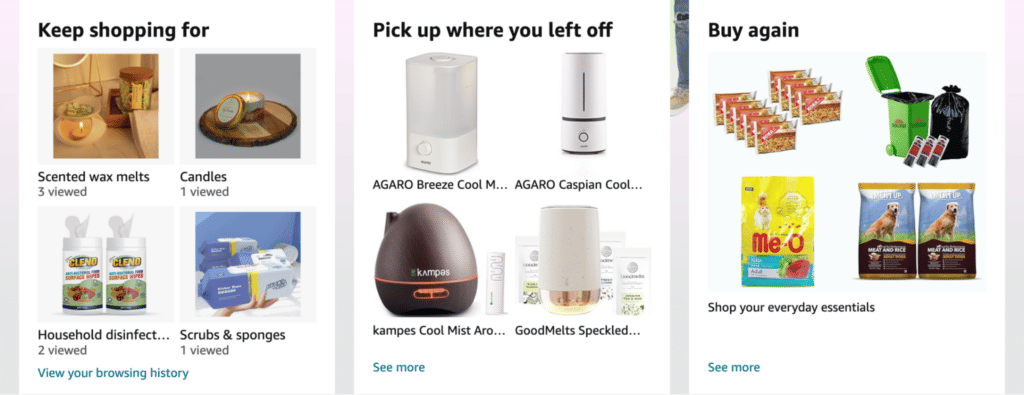
Businesses can utilize Customer Relationship Management (CRM) systems or customer support platforms like Hiver to gather and analyze customer data. This data can then be used to create and send personalized emails through an email service, making each communication more relevant and compelling.
By acknowledging your customers’ preferences and behaviors, you show that you’re paying attention, something that is highly valued and appreciated in today’s market.
4. Create an exhaustive online resource center/learning academy for your customers
Customer expectations have changed significantly over the last few years. Today, they want to be able to resolve issues whenever and wherever they want, without having to contact someone for help. One customer support survey found that 90% of respondents expected organizations to offer a self-service online portal and 65% had a more favorable view of those that offered mobile-responsive one.
A knowledge base is a kind of virtual instruction manual for your product. It’s often the first place your customers go when they have questions or issues with your product or service. And critically, it can help customers help themselves — a big plus for engagement and satisfaction.
Build a knowledge base right from Gmail in no time.

5. Build an active customer community on social media
One of the greatest things about having an active customer community on social media is that it helps you get real-time customer feedback and a good understanding of customer needs. It’s important to have genuine social media engagement with your present and prospective customers.. That means encouraging conversations and discussions and responding in a timely manner — don’t just post about your product or service and then leave.
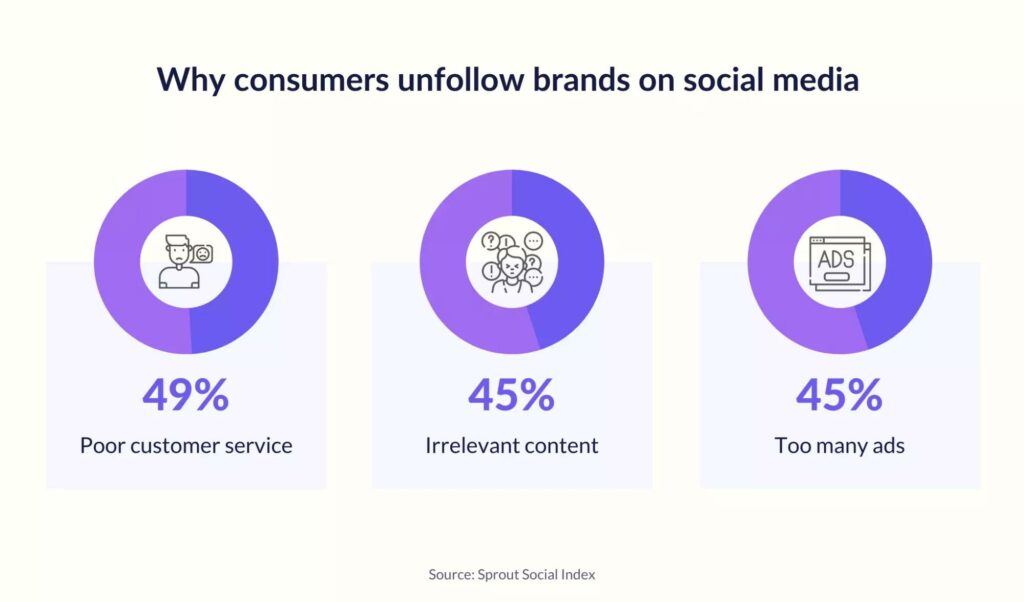
You can provide an awesome customer experience with relevant and interesting stories, humor, and how-tos. You can also post on similar interests and “shoulder” industries. For example, if you’re a swimming pool manufacturer, then videos of happy vacationers on floaty toys may be just the inspiration your customers are looking for.
Now, when you’re creating content for your customers at scale, you might have to automate some portions of it. For instance, you can make use of Instagram tools to help schedule stories, videos, and more – ensuring you spend less time on grunt work and focus more on creating content. Additionally, focusing on getting Instagram followers can enhance your reach and engagement, helping your brand grow organically.
Apart from that, to ensure consistency, you can also make use of an image resizer tool to fit your photos and stand out on different social media platforms like Threads to get more Threads followers.
If you’re a B2B SaaS company, it makes sense for you to establish a strong presence on LinkedIn. For a distinctive, humorous community (and brand voice),check out Ryanair’s Twitter account.
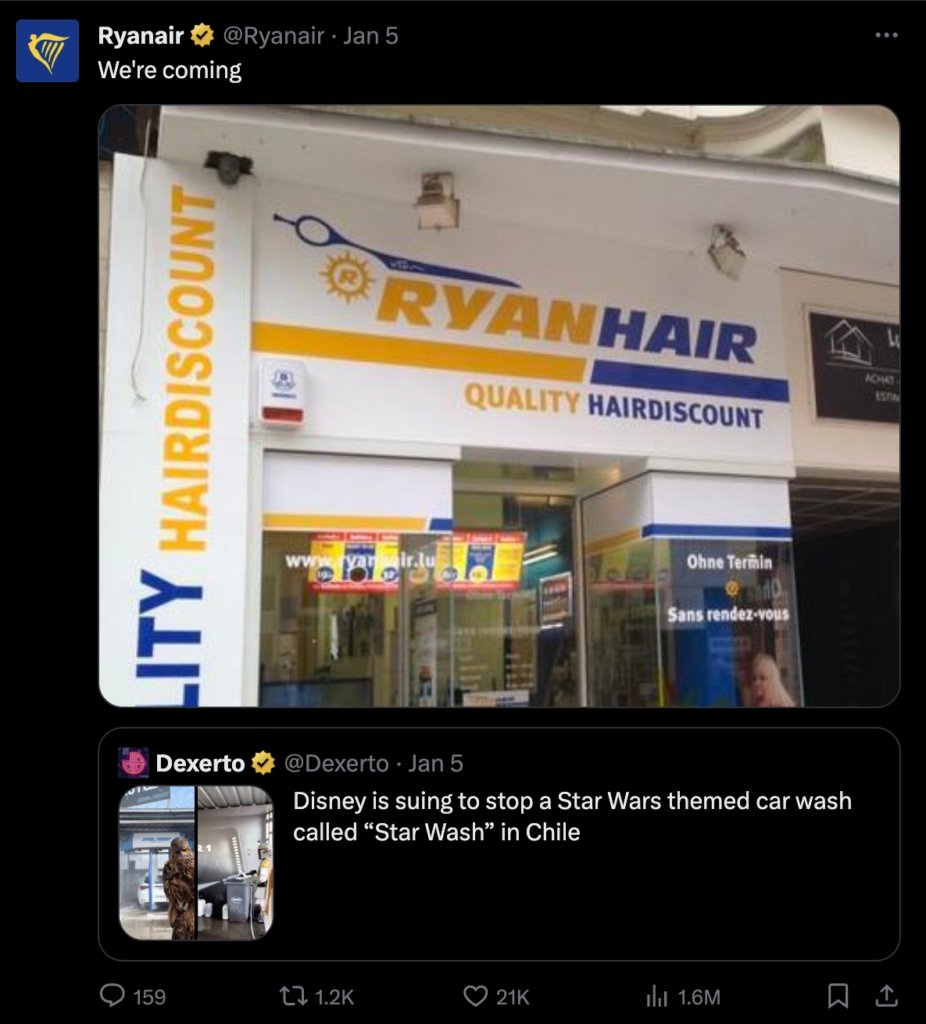
6. Reward customer feedback and participation
Rewarding customer feedback and participation is an essential aspect of boosting engagement across all your customer touchpoints. While your creativity is the only real limit in finding ways to do this, some of the most effective methods include offering discounts, exclusive offers, gifts, community involvement, exclusive experiences, special events, contests, and reward programs.
For instance, you could offer these incentives for actions like liking your page, commenting on your posts, or signing up for your email list. Encourage your satisfied and loyal customers to create content for you, such as shooting a video testimonial or posting a photo showing how they use your product on your social media or website.
A great example of this in action is Starbucks and its highly successful Starbucks Rewards program. Members earn stars for purchases, which can be redeemed for free food and drinks. This program not only encourages repeat purchases but also fosters a sense of community through member-exclusive events and early access to new products. It’s a prime example of how rewarding engagement can create a loyal customer base and a sense of belonging to something bigger.
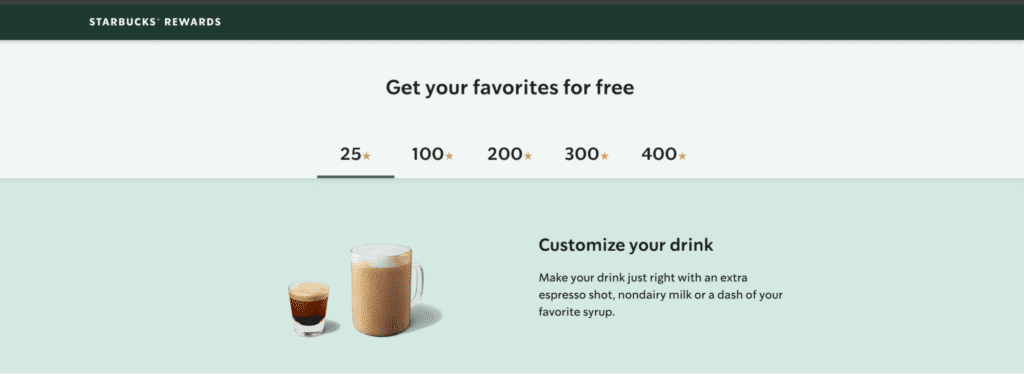
By making your customers feel valued and like they’re part of your brand’s story, you create a deeper connection. It’s important to let them know that their participation and feedback are appreciated.
Measuring the success of your customer engagement strategy
No strategy is “set it and forget it.” Once you have your customer engagement strategy in place, it’s time to measure and continuously improve it.
Here are some KPIs and metrics you need to track:
1. CSAT (Customer Satisfaction Score): CSAT, or Customer Satisfaction Score, is a direct measure of a customer’s satisfaction associated with a specific interaction or their overall experience. It typically involves a survey with a simple question, such as “How would you rate your satisfaction with our service today?” on a scale of say, 1 to 5.
By analyzing CSAT scores, businesses can immediately identify areas of success and those needing improvement, helping refine strategies to foster better customer relationships.
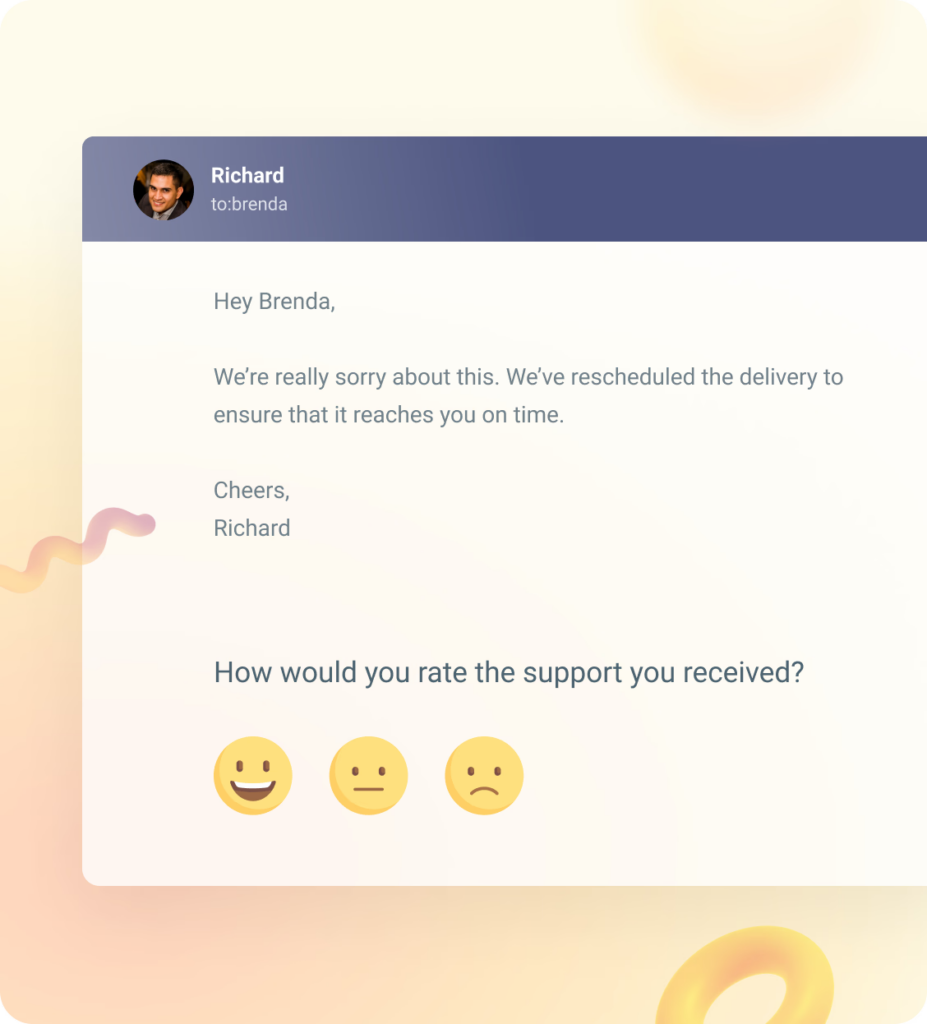
2. Customer Engagement Score: It tracks how actively customers interact with your brand across various touchpoints, such as your website or mobile app. For instance, measuring the frequency of app logins or feature usage to gauge engagement levels.
How to Calculate Your Customer Engagement Score:
Start out by determining which actions are the most important for your company to measure.
Next, assign a weight to each of them. Action A (a purchase) might be more valuable than action B (a click),giving it a higher value.
Then calculate your CES using this formula:

Wt – Weight of a random event.
Nt – Number of occurrences of a random event.
3. Conversion Rate: This is the percentage of visitors who complete a desired action on your site or app, like signing up or making a purchase. For example, tracking the number of visitors who buy a product after viewing an ad.
4. Net Promoter Score (NPS): NPS assesses customer loyalty by asking customers how likely they are to recommend a brand to their family and friends. For instance, a post-purchase survey can ask customers to rate their likelihood of recommending your service to others on a scale from 0 to 10.
You can learn how to calculate NPS.
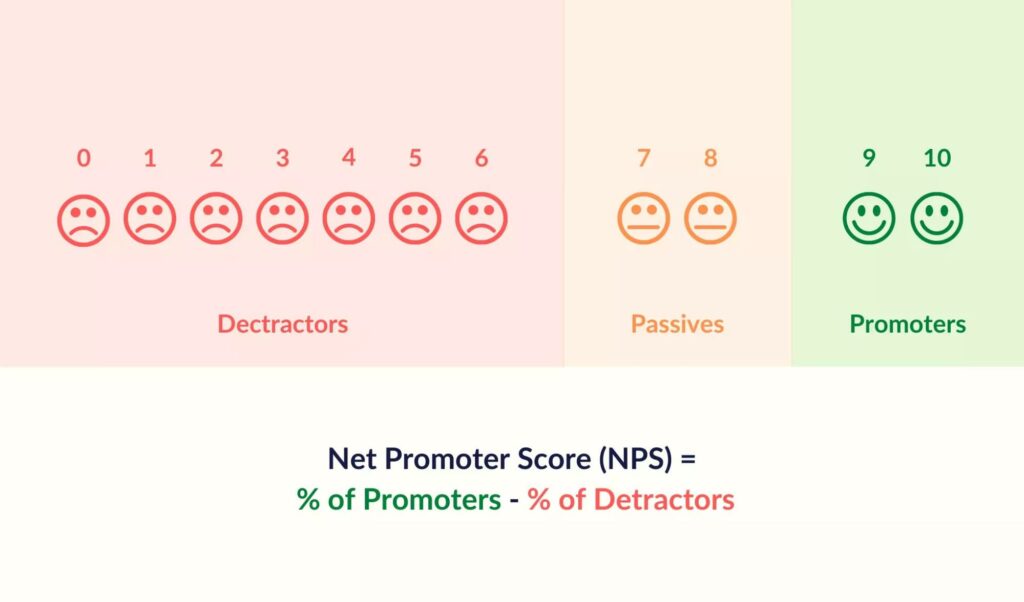
5. Social Mentions, Likes, Comments, and Shares: These metrics measure customer interactions with your brand on social media. An example is tracking the number of times a new product announcement is shared or liked on platforms like Instagram.
6. Online Reviews: This involves monitoring and analyzing customer reviews on platforms like Yelp or Google. For example, measuring the average star rating on third-party apps and reading reviews to understand customer sentiment.
7. Pages Per Session: Indicates how many pages a visitor navigates through in a single session on your website. This way you can track whether users read multiple blog posts in one visit.
8. Session Time: The average time spent by visitors on your site. A longer session time could indicate higher engagement, like spending several minutes reading a detailed product description.
9. Bounce Rate: This metric shows the percentage of visitors who leave your site after viewing only one page. For instance, a high bounce rate on a landing page might indicate the content isn’t engaging or relevant enough.
10. Churn Rate: The percentage of customers who stop using your product or service over a certain period. For example, tracking how many subscribers cancel a monthly subscription service each quarter.
Real-life Examples of Successful Customer Engagement Strategies
To truly see the impact of successful customer engagement strategies, let’s take some real-life examples and understand them better:
1. Sephora’s Omnichannel Engagement
Sephora, a leading beauty retailer, leverages its Beauty Insider Rewards program to create a cohesive experience across online and in-store interactions. Customers using the Beauty Bag app can access their favorites list, past purchases, and rewards points. They can scan items in-store for online options and watch tutorial videos.
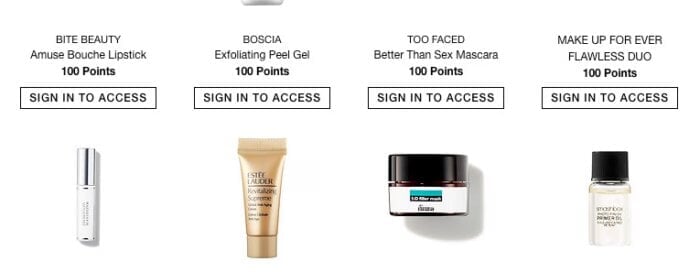
This omnichannel strategy has successfully nurtured about 11 million members who spend 15 times more than the average user, proving the effectiveness of a unified online-offline customer engagement strategy.
2. Petco’s Welcome Email Strategy
Petco excels in making a great first impression with its tailored welcome emails. Their emails stand out by being easy to scan and featuring clear calls-to-action (CTAs). They appeal emotionally to new customers by welcoming them “to their family,” aligning the brand’s values with the customer’s love for their pet.
This strategy sets the stage for a meaningful relationship rather than just a transactional interaction. Petco’s approach demonstrates the power of a well-crafted welcome email in fostering customer loyalty and engagement from the outset.
3. Uber Eats’ Personalized Messaging
Uber Eats leverages the power of personalization in its customer engagement strategy. They use dynamic content to tailor their messaging, showing restaurant options based on a user’s location and past behavior.
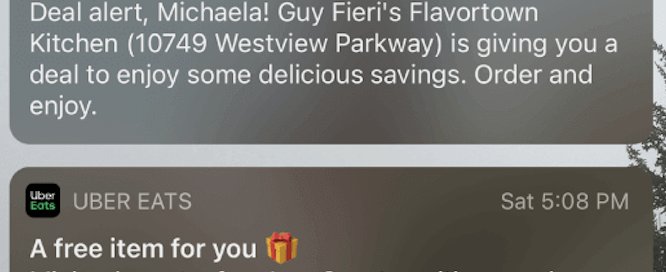
Uber Eats also uses behavior-triggering messaging to highlight missed opportunities and entice users to re-engage with the service. This approach of using personalized content and triggered messaging makes users feel uniquely catered to and keeps them engaged with the brand.
Boost your business’ customer engagement
As we conclude this guide, it’s evident that customer engagement is a vital component in the success and growth of any business. You now have a deeper understanding of how to engage and retain customers, fostering a sense of loyalty that goes beyond mere transactions.
Reflect on your current business practices and identify areas where you can integrate these engagement strategies. Whether it’s through personalized communication, rewarding customer participation, or enhancing your brand voice, each step is a stride toward building a more connected and loyal customer base.
Remember, effective engagement is not just about short-term gains but about nurturing long-term relationships that benefit both your customers and your business. By prioritizing customer engagement, you set your business on a path to not only achieve immediate goals but also to sustain long-term growth and success.

































